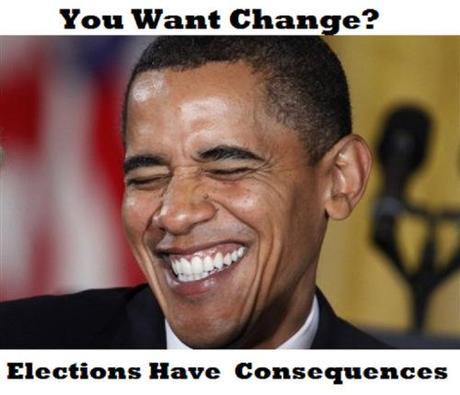. . . which also means those with low-education and low-skills who really should be doing those low-paying jobs are displaced, i.e., unemployed.
Welcome to the POS’s Amerika!

Katherine Peralta for Bloomberg, March 6, 2014 that Americans with college degrees are competing with high-school graduates for low-wage jobs that don’t require college — a competition that has intensified during and after the recession. This means relatively higher unemployment, declining labor market participation and lower wages for those with less education.
The jobless rate of Americans ages 25 to 34 who have only completed high school grew 4.3 percentage points to 10.6% in 2013 from 2007, according to Bureau of Labor Statistics data. Unemployment for those in that age group with a college degree rose 1.5 percentage points to 3.7% in the same period.
Economist Richard Vedder, director of the Center for College Affordability and Productivity, a not-for-profit research organization in Washington, explains: ”The underemployment of college graduates affects lesser educated parts of the labor force. Those with high-school diplomas that normally would have no problem getting jobs as bartenders or taxi drivers are sometimes kept from getting the jobs by people with college diplomas.“
Recent college graduates are ending up in more low-wage and part-time positions as it’s become harder to find education-level appropriate jobs, according to a January study by the Federal Reserve Bank of New York.
In 2012, 44% of Americans ages 22 to 27 with at least a bachelor’s degree are employed in jobs that don’t require that level of education. In 2001, that percentage was 34%.
The New York Fed researchers said it isn’t clear whether two decades of increasing underemployment for recent graduates “represent a structural change in the labor market, or if they are a consequence of the two recessions and jobless recoveries in the first decade of the 2000s.”
Heidi Shierholz, economist at the Economic Policy Institute in Washington, points out that less-educated Americans are even more squeezed because although ”College graduates might not be in a job that requires a college degree, but they’re more likely to have a job.”
Less-educated young adults are then more likely to drop out of the labor market, said Paul Beaudry, an economics professor at the University of British Columbia in Vancouver who studies U.S. employment trends. ”At the complete bottom, we see people picking up the worst types of jobs or completely dropping out.”
The labor participation rate for those ages 25 to 34 with just a high school diploma fell four percentage points to 77.7% in 2013 from 2007. For those with a college degree and above, the rate dropped less than 1 percentage point, to 87.7%.
The share of young adults 20 to 24 years old neither in school nor working climbed to 19.4% in 2010 from 17.2% in 2006. For those ages 25 to 29, it rose to 21.3% from 20% in that period, according to a Federal Reserve Bank of Boston report in December.
A year-long survey ending in July 2012 of 500,000 Americans ages 19 to 29 showed that 63% of those fully employed had a bachelor’s degree, and their most common jobs were merchandise displayers, clothing-store and cellular phone sales representatives, according to Seattle-based PayScale Inc., which provides compensation information.
The share of recent college graduates in “good non-college jobs,” those with higher wage-growth potential, such as dental hygienists, has declined since 2000, according to the New York Fed study. Meanwhile, the portion has grown for those in low-wage jobs paying an average wage of below $25,000, including food servers and bartenders.
As the number of college graduates outweighs the availability of education-appropriate jobs and they take whatever they can get, everyone else is pushed down the ladder, said Katie Bardaro, PayScale’s lead economist and analytics manager. “There’s not really a lower-level job they can move into since they were already in a low-level job.”
However, a college education still means more pay than without a college diploma. In fact, the pay gap between college vs. high school grads is increasing:
- In 1979, high school graduates were paid 77% of what college graduates made, whereas today it’s about 62%, according to a study by Washington-based Pew Research Center released last month.
- College graduates ages 25 to 32 working full-time now earn on average $17,500 more annually, adjusted for inflation, than those with just a high-school diploma. In 1979, it was $9,690 more.
But that is small comfort because overall, both high school and college grads are getting poorer:
- Today, 22% of Americans ages 25 to 32 with only a high school diploma live in poverty; in 1979, it was only 7%.
- Today, 6% of college-educated young adults live in poverty; in 1979, it was 3%.
I’m tired of rewriting Katherine Peralta’s long, tedious, and poorly-written Bloomberg article. Read the rest of her article, here.
~Eowyn

